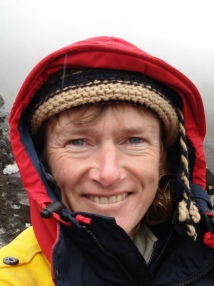Research activities and interests
My research interests are broad and include the InSAR, planetary geoscience, spectral geology, tectonic geomorphology, geohazards and the application of remote sensing and data science/machine learning to a variety of geoscientific fields.
I am a member of the newly formed Geohazards Research Group here in ESE, and of the Engineering Scale Geology Research Group ESGRG, an interdepartmental group focused on small scale geological problems affecting civil engineering activities.
I have been a member of the EnVision mission proposal team since 2010, and now that the mission has been selected, am an appointed member of both the ESA Science Study Team (SST) and the NASA VenSAR Science Team (VeST) in supporting the EnVision Venus mission science and instrument development up to mission adoption in 2024 and beyond. EnVision is an ESA/NASA funded M5 mission for the exploration and mapping of the planet Venus, which will use Synthetic Aperture Radar (InSAR), SubSurface Radar Sounding and multispectral NIR imaging of emissivity, similar to instruments which we use routinely on Earth, to better understand the tectonic, surface and internal structure of Venus, and thereby to better understand its history as a planet seemingly inhospitable to life, as well as to detect current geological activity. The instrument payload also includes UV and IR spectrometers aimed at exploring Venus' atmosphere, clouds and climate, as well as a Radio Science Experiment, to better understand the interior structure of the planet. Hence EnVision will investigate Venus form the cloud tops down to the core!
My Earth-bound research is focused mainly on the development and application of InSAR techniques to the understanding of small-scale ground deformation. I have research students working with persistent scatter InSAR techniques to measure and monitor small scale ground movements in natural and man-made environments. I have recently completed the publication of the first national guidelines document on the use of Earth Observation and InSAR in infrastructure and civil engineering, as lead author of an international team from academia and industry. My research also involves the use and development of remote sensing to a variety of environmental challenges. This includes the use of cosmogenic nuclides to reconstruct ice retreat history in Antarctica; and in the use of machine learning to extract environmental information from global Earth Observation data.
Current Research Students

- Gerard Gallardo i Peres (2023-2027) Venus SAR processing software development for the EnVision mission to Venus
- Di Xu (2023-2027) Developing Machine Learning approaches to change detection tracking of atmospheric methane plumes
- Hsuan-Yi Li (2022-2026) Unsupervised crop mapping using Earth Observation optical and SAR data with Machine Learning
- Zayad al Zayer (2022-2026) Tracking coral reef bleaching in satellite images and Machine Learning
- Miryam Prasow (2022-2026) Tracking of climate change variables using Machine Learning
- Jonathan Adams (2020-2023) Cosmogenic nucleide & remote sensing analysis for understanding climate, Antarctica
- Anthony Carpenter (2019-2023): Long-term nuclear decommissioning and development of UAV SAR
- Stewart Agar (2017–2023): Development of DInSAR as a tool to aid site investigation and monitoring of a geological disposal facility for radioactive waste in the UK
Collaborators
Richard Haslam, British Geological Survey, The structure and geology of south-east England, 2015
Research Student Supervision
Bischoff,C, Investigating ground movement and its causes in London, UK, using Permanent Scatterer Interferometry
Wan,X, Vision based UAV navigation based on illumination-invariant image matching
Wu,M-C, Modelling of Yingxiu-Beichuan fault zone based on refined DInSAR data of 2008 Wenchuan earthquake

